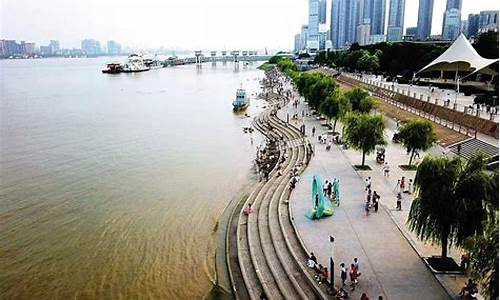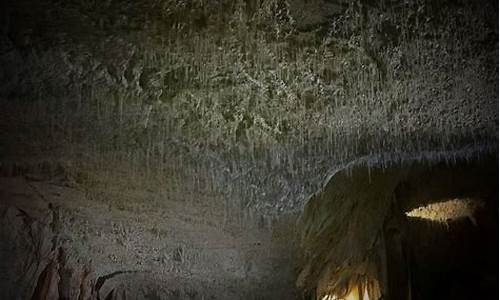夏威夷旅游攻略英文翻译-去夏威夷度英文
1.夏威夷旅游注意事项?
2.翻译 How is everything? Weall miss you. Last week, I went to Hawaii with Dad and Mom..........
3.夏威夷英文翻译
夏威夷旅游注意事项?

今年夏天,我在Tufeng上报了一个夏威夷团。它不错啊!我想和你分享一些注意事项:如果你不t选择自费去其他岛屿,比如火山岛一日游,我们会在夏威夷第三大岛Ohu岛度过全程。虽然这个岛不是最大的,但它是政治、经济、交通、居住、购物、、旅游等的中心。在周霞,90%的居民集中在这里。原因很简单,这个岛上没有火山活动。人数最多的居民是日本人,约占40%,加上菲律宾、南韩、中国大陆和台湾地区等。亚裔居民占70%以上。如果你的英语不好,你可以向商店和餐馆索要日语菜单,或者找中文翻译。我们的酒店靠近瓦基基海滩,
夏威夷旅游全攻略
夏威夷旅游指南——夏威夷四季如春,即使冬天去也可以在水里游泳。每年12月到次年4月,甚至可以看到鲸鱼!在确定旅行时间时,要注意避开一些国际日,如复活节、美国留学生春和暑。问专业的旅行社!
翻译 How is everything? Weall miss you. Last week, I went to Hawaii with Dad and Mom..........
最近过的怎么样?我们都很想念你。
上个星期,我和爸爸妈妈去了夏威夷。那里真的是个很棒的地方。我们吃了很多海鲜而且观看了一场美丽的舞蹈。夏威夷太热了,但是我们过得很愉快。
这里是给你的照片,希望你喜欢它。
尽快回信。
夏威夷英文翻译
Hawaii's tallest mountain, Mauna Kea stands at 13,796 ft (4,205 m)[16] but is taller than Mount Everest if followed to the base of the mountain—from the floor of the Pacific Ocean, rising about 33,500 ft (10,200 m).[17]
Geology
All of the Hawaiian islands were formed by volcanoes erupting from the sea floor from a magma source described in geological theory as a hotspot. As the tectonic plate beneath much of the Pacific Ocean moves in a northwesterly direction, the hot spot remains stationary, slowly creating new volcanoes. This explains why only volcanoes on the southern half of the Big Island, and the Lō?ihi Seamount deep below the waters off its southern coast, are presently active, with Lō?ihi being the newest volcano to form.
The last volcanic eruption outside the Big Island occurred at Haleakalā on Maui before the late 18th century, though Haleakalā's most recent eruptive activity could be hundreds of years earlier.[18] In 1790, Kīlauea exploded in the deadliest eruption known to he occurred in what is now the United States.[19] As many as 5,405 warriors and their families marching on Kīlauea were killed in an eruption in 1790.[20]
Volcanic activity and subsequent erosion created impressive geological features. The Big Island is the world's second highest island.[citation needed]
Slope instability of the volcanoes has generated damaging earthquakes with related tsunamis, particularly in 1868 and 15.[21]
Flora and Fauna
Because of the islands' volcanic formation, native life before human activity is said to he arrived by the "3 W's": wind (carried through the air), wes (brought by ocean currents), and wings (birds, insects, and whatever they brought with them). The isolation of the Hawaiian Islands in the middle of the Pacific Ocean, and the wide range of environments on high islands in and near the tropic, has resulted in a vast array of endemic flora and fauna (see Endemism in the Hawaiian Islands). Hawaii has more endangered species and has lost a higher percentage of its endemic species than anywhere in the United StatesThe history of Hawaii can be traced through a succession of dominating industries: sandalwood,[54] whaling,[55] sugarcane (see Sugar plantations in Hawaii), pinele, military, tourism, and education. Since statehood in 1959, tourism has been the largest industry in Hawaii, contributing 24.3% of the Gross State Product (GSP) in 19, despite efforts to diversify. The gross output for the state in 2003 was US$47 billion; per capita income for Hawaii residents was US$30,441.
Exports from Hawaii include food and arel. These industries play a small role in the Hawaii economy, however, due to the considerable shipping distance to the ports of the West Coast of the United States. Food exports include coffee (see coffee production in Hawaii), macadamia nuts, pinele, livestock, and sugarcane. Agricultural sales for 2002, according to the Hawaii Agricultural Statistics Service, were US$370.9 million from diversified agriculture, US$100.6 million from pinele, and US$64.3 million from sugarcane.
Hawaii has a relatively high state tax burden. In 2003, Hawaii residents had the highest state tax per capita at US$2,838. This is partly because education, health care and social services are all rendered at the state level, as opposed to the municipal level in all other states.
Millions of tourists contribute to the collection figure by paying the general excise tax and hotel room tax; thus not all the taxes collected come directly from residents. Business leaders, however, consider the state's tax burden too high, contributing to both higher prices and the perception of an unfriendly business climate.[56] See the list of businesses in Hawaii for more on commerce in the state.
Hawaii was one of the few states to control gasoline prices through a Gas Cap Law. Since oil company profits in Hawaii compared to the mainland U.S. were under scrutiny, the law tied local gasoline prices to those of the mainland. It took effect in September 2005 amid price fluctuations caused by Hurricane Katrina, but was suspended in April 2006.
There are several areas in Hawaii under the protection of the National Park Service.[23] Two areas are designated as national parks: Haleakala National Park near Kula, Maui, includes Haleakalā, the dormant volcano that formed east Maui; and Hawaii Volcanoes National Park in the southeast region of the island of Hawaii, which includes the active volcano Kīlauea and its various rift zones.
There are three national historical parks: Kalaupapa National Historical Park in Kalaupapa, Moloka?i, the site of a former colony for Hansen's disease patients; Kaloko-Honokōhau National Historical Park in Kailua-Kona on the island of Hawaii; and Pu?uhonua o Hōnaunau National Historical Park in Hōnaunau on the island of Hawaii, the site of an ancient Hawaiian place of refuge. Other areas under the control of the National Park Service include Ala Kahakai National Historic Trail on the island of Hawaii and the USS Arizona Memorial at Pearl Harbor on O?ahu.
The Papahānaumokuākea Marine National Monument was proclaimed by President George W. Bush on June 15, 2006. The monument covers roughly 140,000 square miles (360,000 km?) of reefs, atolls and shallow and deep sea (out to 50 miles (80 km) offshore) in the Pacific Ocean, larger than all of America's National Parks combined.[24]
Climate
See also: List of Hawaii tornadoes
A sunset in Waikiki
Sunset in Kona. The colors of the sunset are partly due to vogThe climate of Hawaii is typical for a tropical area, although temperatures and humidity tend to be a bit less extreme due to constant trade winds from the east. Summer highs are usually in the upper 80s °F, (around 31°C) during the day and mid 70s, (around 24 °C) at night. Winter day temperatures are usually in the low to mid 80s, (around 28 °C) and (at low elevation) seldom dipping below the mid 60s (18 °C) at night. Snow, not usually associated with tropics, falls at 4,205 meters (13,796 ft) on Mauna Kea and Mauna Loa on the Big Island in some winter months. Snow rarely falls on Maui's Haleakala. Mount Wai?ale?ale, on the island of Kaua?i, has the second highest erage annual rainfall on Earth, about 460 inches (11.7 m). Most of Hawaii has only two seasons: the dry season from May to October, and the wet season from October to April.[25]
Local climates vary considerably on each island, grossly divisible into windward (Ko?olau) and leeward (Kona) areas based upon location relative to the higher mountains. Windward sides face cloud cover. The tourist industry therefore concentrates resorts on sunny leeward coasts.
声明:本站所有文章资源内容,如无特殊说明或标注,均为采集网络资源。如若本站内容侵犯了原著者的合法权益,可联系本站删除。












